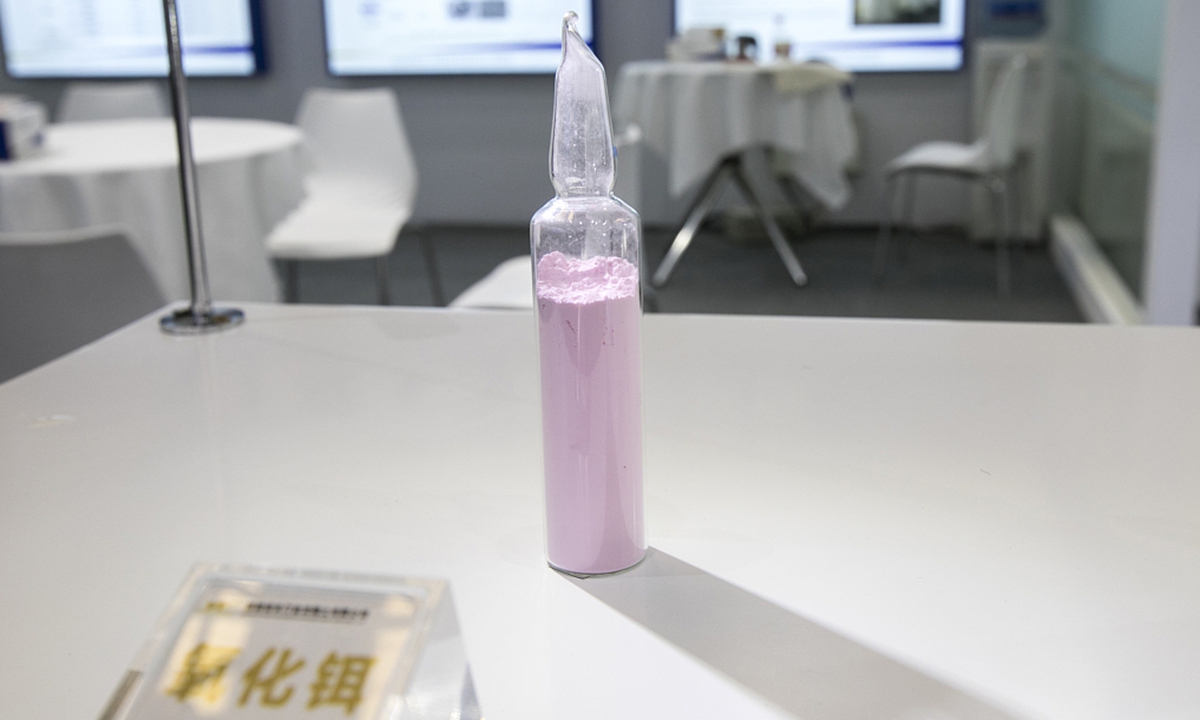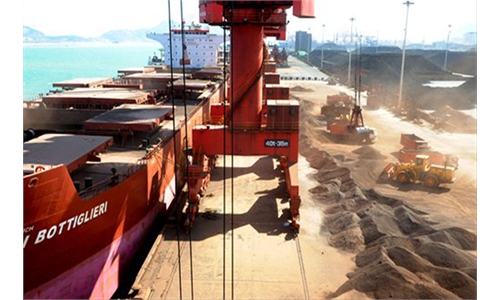China's rare earth price exceeds a historic high amid booming demand and tight supplies

Erbium(III) oxide of Golden Dragon Rare Earth Company is on display. Photo: VCG
Rare earth prices have broken a 10-year high on Thursday, driven by the development of emerging industries, tight supplies and the consolidation of industries at the national level. Insiders said that this could be an indication that marks the end of the era of the irrationally low prices of China's rare earth.
Within 3 minutes after the opening of the market at the 85th High-Tech auction by the China Northern Rare Earth (Group), the four targets of 20 tons of neodymium praseodymium all reached the alarm price and were sold at a price of 930,000 yuan ($145,452) per ton, according to Baotou Rare Earth Products Exchange on Thursday. This price has broken a 10-year high record.
At the same time, the profitability of rare earth companies has also greatly improved. China Minmetals Rare Earth stated in a recent announcement that the company's 2021 operating revenue target is 2.7 billion yuan ($422 million), an increase of about 63 percent from 2020 operating revenue of 1.66 billion yuan ($250 million).
Industry insiders said that the recent price increase was caused by the two-pronged effect on supply and demand. However, the effects on supply are more obvious.
The trade manager of a domestic rare earth company told the Global Times on Thursday that the price jump is the result of high market demand and short supplies.
"All the bulk commodities are rising substantially in recent months and rare earth certainly is not exception," he said.
The fundamentals of supply and demand are expected to support rare earth prices to continue to go up, since the fourth quarter is the traditional peak season for downstream demand for rare earths, experts said.
Australia's Lynas supply, which accounts for 10 percent of the global light rare earth output, has tightened leading to a decrease of 10 percent on the output of neodymium praseodymium oxide in Q3 from the previous quarter and a year-on-year decrease of 6 percent, according to media reports.
Moreover, Myanmar's rare earth exports have reportedly shrunk due to the global pandemic.
At the same time, China's rare earth export has continued to remain at a high level. In October, the export volume of rare earths reached 4,330.4 tons, a surge of 89.27 percent year-on-year, according to data from the General Administration of Customs.
Meanwhile, the cumulative export volume of rare earth, from January to October this year, exceeded 39,967 tons, a year-on-year increase of 39.4 percent.
Driven by the strong demand and tight supplies, the export price of the rare earth also increased to 3.44 billion yuan, a year-on-year growth of 78.5 percent.
China has no obligation to be a "rare earth supplier" to the world, Lin Boqiang, Director of the China Center for Energy Economics Research at Xiamen University told the Global Times on Thursday, noting that China's rare earth must ensure the safety of the supply chain and the sustainable development of the environment.
"Under these premises, China's rare earth must sell at the price of rare earth," Lin said.
In March, the Ministry of Industry and Information Technology stated that China's rare earths were not sold at the price of rare earths but sold at a price of 'earth'," which is regarded as a signal of drastic changes in the industry.
In the context of carbon neutrality and China's industrial transformation, the value of rare earths has also increased.
China's strategic goals of "carbon peak and carbon neutrality" are an opportunity for the country's rare earth industry, because the development of new energy vehicles and clean energy construction has a huge connection with rare earth, experts said.
The China Northern Rare Earth (Group) High-Tech stated on an investor interaction platform on Wednesday that the company's export revenue accounted for a relatively low proportion.
In the future, the company will increase its research and development efforts to promote the development of the rare earth industry to downstream high-end and high value-added fields, according to its statement.
The price of China's rare earth reached a historic high. While it may go down like other bulk commodities, it may never return to the very low level where it was because of the rising environmental costs and other factors, Lin said.

